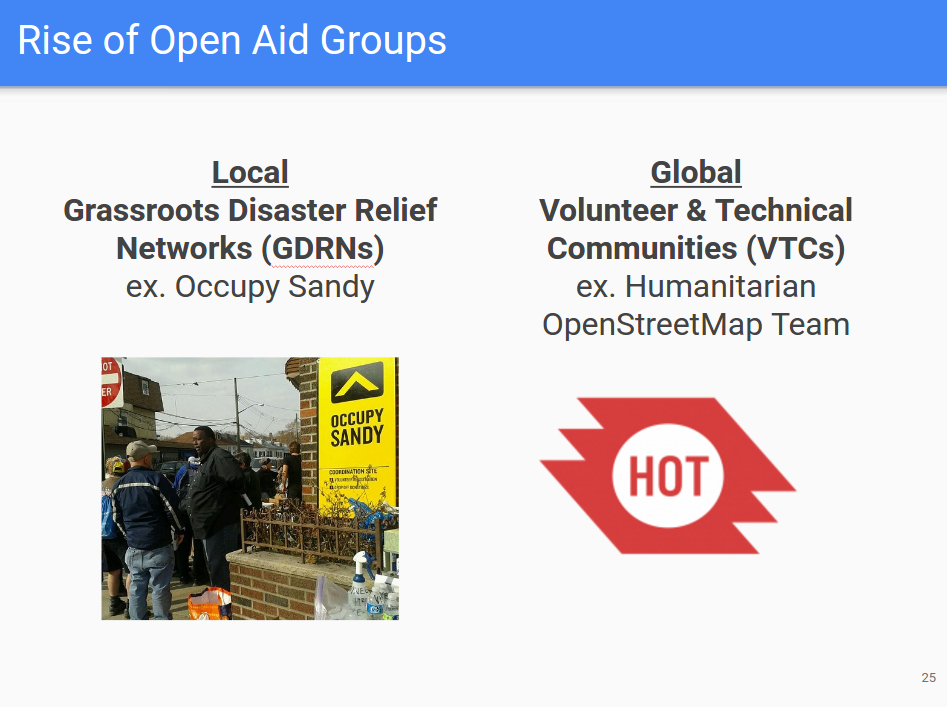The AIANY invited me to present my perspective on Occupy Sandy at their event “Stand Up! How to be Part of the Solution after a Disaster.” My presentation argues that Occupy Sandy, and the mutual aid work of its predecessor Occupy Wall Street, were physical-world manifestations of the “Open Aid” trend taking place in the disaster relief and humanitarian aid sectors.
The presentation begins by pointing to the fact that “faith in institutions” is at an unprecedented low in the USA at the same time as our economy is being transformed by widespread access to networked communication technologies. These technologies enable autonomously organized, local grassroots disaster response efforts to network with each other to create a new type of entity that the Department of Defense is calling “Grassroots Disaster Relief Network” (GDRN). In the virtual world, networked communication technologies are also allowing people with specialized technical skills to organize themselves into groups that can provide information processing services through a wide variety of tools including social media, GIS and collaborative documents. These groups are called Volunteer Technical Communities (VTCs).
I argue that GDRNs are a local/physical manifestation of the “Open Aid” concept, and VTCs are a global/digital one. Currently VTCs tend to serve formal response organizations such as UNOCHA, but in the not-too-distant future they’ll be able to collaborate directly with GDRNs, giving disaster survivors and their communities unprecedented access to information.
The presentation ends with some suggestions for how we can set up simple, open source systems to streamline information flows related to disasters.
I gave a very similar presentation to disaster response personnel at the Disaster Preparedness Exchange in Indianapolis a week later.

Leave a Reply